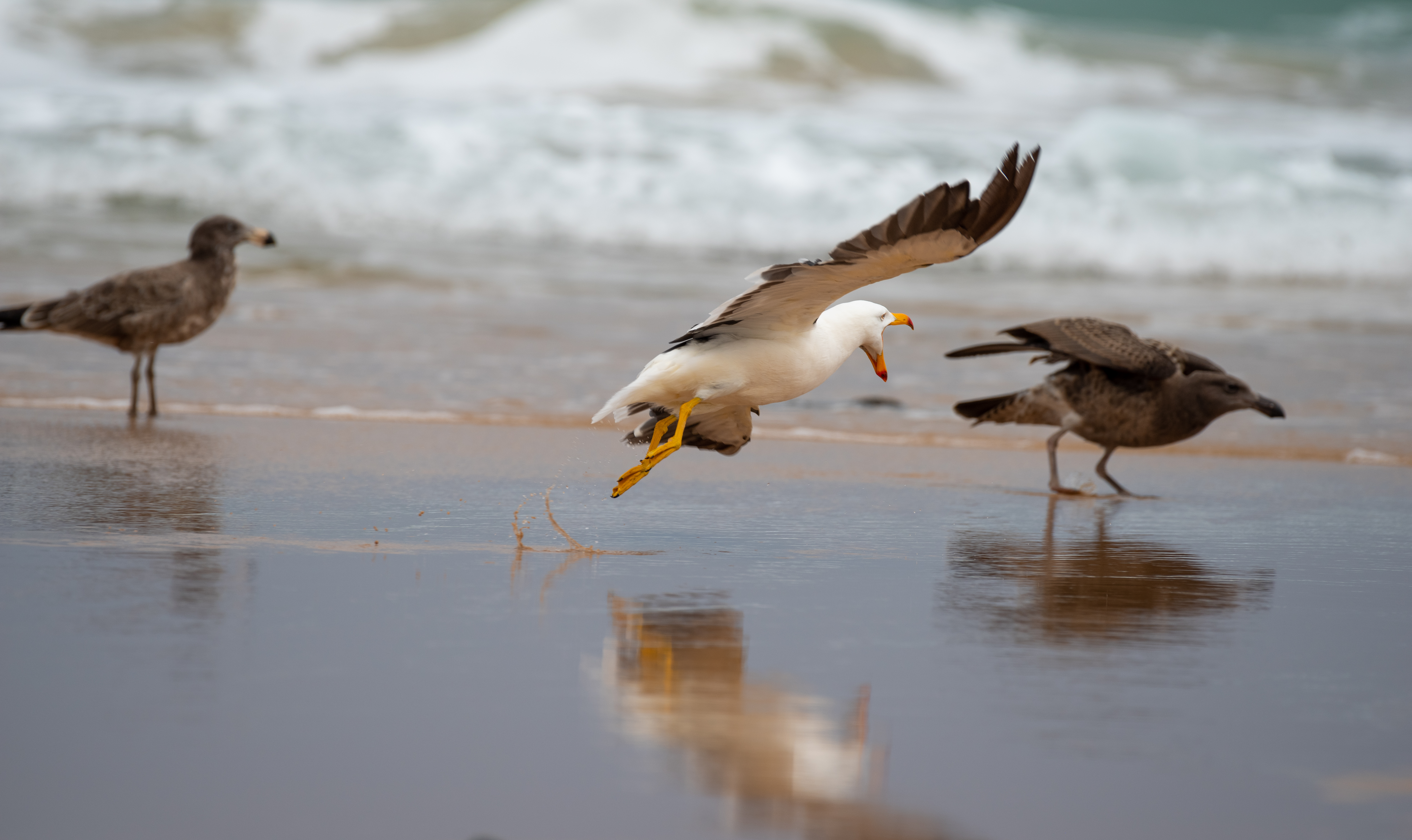Pacific Gull on:
[Wikipedia]
[Google]
[Amazon]
The Pacific gull (''Larus pacificus'') is a
 Of the two
Of the two
Juvenile pacific gull.jpg, Juvenile
Juvenile Pacific Gull in flight.jpg, Juvenile, Cape Woolamai, Victoria
Pacific gull (Larus pacificus pacificus) in flight Freycinet.jpg, Adult, Freycinet, Tasmania
gull
Gulls, or colloquially seagulls, are seabirds of the subfamily Larinae. They are most closely related to terns and skimmers, distantly related to auks, and even more distantly related to waders. Until the 21st century, most gulls were placed ...
, native to the coasts of Australia
Australia, officially the Commonwealth of Australia, is a country comprising mainland Australia, the mainland of the Australia (continent), Australian continent, the island of Tasmania and list of islands of Australia, numerous smaller isl ...
. It is moderately common between Carnarvon in the west, and Sydney
Sydney is the capital city of the States and territories of Australia, state of New South Wales and the List of cities in Australia by population, most populous city in Australia. Located on Australia's east coast, the metropolis surrounds Syd ...
in the east, although it has become scarce in some parts of the south-east, as a result of competition from the kelp gull
The kelp gull (''Larus dominicanus''), also known as the Dominican gull, is a gull that breeds on coasts and islands through much of the Southern Hemisphere. The nominate ''L. d. dominicanus'' is the subspecies found around South America, pa ...
, which has "self-introduced" since the 1940s.
Much larger than the ubiquitous silver gull
The silver gull (''Chroicocephalus novaehollandiae'') is a gull in Oceania. It is the most common gull of Australia. It has been found throughout the continent, but particularly at or near coastal areas. It is smaller than the Pacific gull (''L ...
, and much less common, Pacific gulls are usually seen alone or in pairs, loafing around the shoreline, steadily patrolling high above the edge of the water, or sometimes flying high on the breeze to drop a shellfish
Shellfish, in colloquial and fisheries usage, are exoskeleton-bearing Aquatic animal, aquatic invertebrates used as Human food, food, including various species of Mollusca, molluscs, crustaceans, and echinoderms. Although most kinds of shellfish ...
or sea urchin
Sea urchins or urchins () are echinoderms in the class (biology), class Echinoidea. About 950 species live on the seabed, inhabiting all oceans and depth zones from the intertidal zone to deep seas of . They typically have a globular body cove ...
onto rocks.
Diet
The gulls' diet consists of a number various fish species and invertebrates. They frequently consume crabs, most often the species '' Ovalipes australiensis'' and '' Paragrapsus gaimardii.'' They also commonly eat '' Platycephalus bassensis'' (sand flatheads) and cephalopods, both of which are sourced from their regular consumption of waste from fish which have been cleaned on wharves and beaches. Additionally, they may eat insects, eggs, and other seabirds. The gulls may be found scavenging abattoirs and in rubbish tips, where they will often steal food from other birds.Taxonomy
The Pacific gull was first described by English ornithologist John Latham in 1801 from a Thomas Watling drawing, where the local name had been recorded as ''Troo-gad-dill''. Its specific epithet refers to thePacific Ocean
The Pacific Ocean is the largest and deepest of Earth's five Borders of the oceans, oceanic divisions. It extends from the Arctic Ocean in the north to the Southern Ocean, or, depending on the definition, to Antarctica in the south, and is ...
.
Two subspecies
In Taxonomy (biology), biological classification, subspecies (: subspecies) is a rank below species, used for populations that live in different areas and vary in size, shape, or other physical characteristics (Morphology (biology), morpholog ...
are recognised:
Description
Pacific gulls are the only large gulls in their range, besides the occasional kelp gull. This species can range in length from and span across the wings.Harrison, Peter, ''Seabirds: An Identification Guide''. Houghton Mifflin Harcourt (1991), They typically weigh from . This species is mostly white, with dark wings and back, and a very thick (when compared to other gull species), powerful, red-tipped yellow bill. They have salt glands that secrete salty water through the nostrils. Young birds are mottled-brown all over, and attain their adult plumage only gradually; by its fourth year, a young Pacific gull has usually become difficult to tell apart from an adult bird. Of the two
Of the two subspecies
In Taxonomy (biology), biological classification, subspecies (: subspecies) is a rank below species, used for populations that live in different areas and vary in size, shape, or other physical characteristics (Morphology (biology), morpholog ...
, the nominate eastern race prefers sheltered beaches, and the western race ''L. p. georgii'' is commonly found even on exposed shores. Both subspecies nest in pairs or loose colonies on offshore islands, making a cup of grasses and sticks in an exposed position, and laying two or three mottled brown eggs.
References
{{Taxonbar, from=Q619065Pacific gull
The Pacific gull (''Larus pacificus'') is a gull, native to the coasts of Australia. It is moderately common between Carnarvon, Western Australia, Carnarvon in the west, and Sydney in the east, although it has become scarce in some parts of the s ...
Birds of South Australia
Birds of Tasmania
Birds of Victoria (state)
Birds of Western Australia
Endemic birds of Australia
Pacific gull
The Pacific gull (''Larus pacificus'') is a gull, native to the coasts of Australia. It is moderately common between Carnarvon, Western Australia, Carnarvon in the west, and Sydney in the east, although it has become scarce in some parts of the s ...
Pacific gull
The Pacific gull (''Larus pacificus'') is a gull, native to the coasts of Australia. It is moderately common between Carnarvon, Western Australia, Carnarvon in the west, and Sydney in the east, although it has become scarce in some parts of the s ...